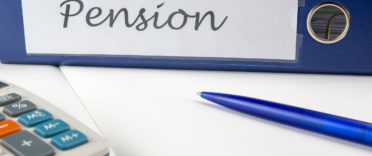When you’ve built up a decent pension pot over many years, you might find it a bit nail-biting to move from saver to spender as you start taking money out. But there are things you can do to ensure your money lasts as long as possible while getting the income you need to live on in retirement. This brief guide will cover the key things you need to know when you’re ready to move into pension drawdown. We explain pension drawdown rules including what pension drawdown is, how pension drawdown works and whether pension drawdown is right for you.
What is pension drawdown?
If you have a defined contribution pension, the day will come when you’re ready to switch to the drawdown phase - it’s time to reap the benefits of all of your years of saving.
With pension drawdown, you can buy a flexible product that keeps your pension invested in such a way as to give you an income that you can ‘draw down’ (i.e., take out and spend) while continuing to grow the rest of the pot. In this way, it will hopefully be able to keep meeting your income needs in the future.
How does pension drawdown work?
This is only a brief guide to pension drawdown; consider taking professional advice* to give yourself the best chance of your pension going the distance and giving you a good standard of living in retirement. But here are a few basic questions answered to get you started.
Which pension provider should I choose for drawdown?
You’ve been saving into a pension scheme with a certain provider, but you don’t have to stick with them when it’s time to start drawing an income. In fact, you should definitely shop around to find the best drawdown product for you but do check the fees you will pay on any transfer.
When can I start my pension drawdown?
The current age at which you can start drawing a pension is 55, but it is scheduled to rise to 57 by 2028. There are some exceptions, such as if you are in poor health, so check the small print of your pension scheme and talk to the scheme administrator if this applies to you.
What is the maximum I can drawdown?
You can take as much as you want in income drawdown, but obviously, you don’t want to risk leaving yourself short, especially if you end up living a long time and spend many years in retirement.
What happens to my money when in pension drawdown?
Money that you don’t withdraw stays invested so it can grow. It should be in funds that match your appetite for risk and have the best chance of meeting your income goals (a financial adviser can help you get this right). You can choose your own funds, or pick a ready-made portfolio. You might be offered multi-asset funds, risk-rated portfolios, passive funds, or with-profits funds, for example.
Since 2015, all new income drawdown plans that have been set up are called ‘flexi-access drawdown’. Before this time, you could also have a ‘capped drawdown’ plan, which limited how much you could take out of your pension pot to 150% of the income you could get from a lifetime annuity. No new capped drawdown plans are being set up, but if you’ve already got one, it carries on under its existing rules. If you go above the drawdown cap, your tax relief on future pension savings will be reduced.
Flexi-access drawdown allows you to take 25% of your pension pot upfront, tax-free, and there are no limits on how much you withdraw after that. If you wanted to, you could take out the whole lot in one go (but this is not generally recommended!). See below for more on cash lump sums.
What are the pension drawdown rules?
- You have to be aged 55 or over to start drawing money out of your pension.
- You can move it into drawdown a little at a time or all at once.
- You can take 25% of your pot as tax-free cash upfront and keep the rest invested.
- You’ll pay income tax on anything else you withdraw.
- You can withdraw as often as you like, as much as you like, regularly or just as and when you need to dip in.
What tax do I pay if I draw down my pension?
The first 25% of the amount you withdraw is tax free. After that, you pay normal income tax rates on anything you take above the personal allowance threshold which is £12,570 in the 2024/25 tax year. You pay 20% tax (basic rate) on the next £37,700 above this, 40% (higher rate) on anything above £50,270, and 45% (additional rate) above £150,000.
Any income you get from an annuity would also be taxed as income in the same way.
Pros and cons of pension drawdown
Pros of pension drawdown
- Flexibility - Perhaps one of the main pension drawdown benefits is the flexibility and control it offers. You can take out less or more income as and when you need it, unlike an annuity when you receive the same set amount each year (while potentially locked into a poor annuity rate). This is useful for tax planning as you can hold off taking money out in one tax year if it would push you into a higher tax bracket.
- Your money stays invested - Another is that the majority of your pot stays invested so it can continue to grow over time, so you’re still feathering your nest even when you’ve already hit retirement.
Cons of pension drawdown
- Income can fluctuate - The main ‘pro’ of flexible drawdown could also be considered a ‘con’ in that you don’t get a guaranteed income the way you would with an annuity. Other cons are that it can be hard to compare offerings from different providers as they can be fairly complex. With pension drawdown, your capital is still at risk in the stock market, which might worry some people in retirement who fear losing everything in a market crash.
- Fees and charges - Of course, as your money stays invested, you will continue paying fees and charges. Your beneficiaries may also have to pay inheritance tax or income tax on your pot when you die. There's also a risk you may withdraw too much or your investments might tank and you could run out of money, so pension drawdown needs careful management.
Is pension drawdown right for me?
Generally speaking, pension drawdown works for people who don’t need a regular fixed income from their pension pot, perhaps because they have other sources of income too. Having flexibility in what you draw from your pension can help a lot with efficient tax planning. Pension drawdown allows you to keep your options open – you could always use some of your pot to buy an annuity or withdraw it as cash later on if you choose. It could be a good option if you have a large pot and you want to remain invested even once you’re retired.
Things to consider when choosing a pension drawdown provider
You need to consider the range of investment funds on offer and their different risk profiles and volatility, as well as whether a drawdown product will give you access to the market’s best performing funds. You should also think about how you want to access and manage your drawdown plan – for example, is it important to you that your provider has a good digital offering? Also, check the charges you will pay and any extra guarantees you may be able to get.
You’ll also need to think about what a sustainable income would be depending on the size of your pot, your age, your lifestyle, your investments, and how long you might be in retirement. A 2017 study from the University of York found 4% was the magic number you could withdraw from a pension pot as income each year for a comfortable life without taking too much out or leaving too much behind unspent when you die.
But a paper published in 2018 by the Institute and Faculty of Actuaries found that 3.5% is the drawdown rate needed for a sustainable income. So, for example, a healthy person who begins drawdown at age 65 could take £3,500 a year from a £100,000 pension pot and it would be sustainable, the research found. But if they entered drawdown at age 55, the figure would fall to 3%.
We tackle this subject in a recent podcast episode where we explore an alternative to the 4% rule for retirement income, known as dynamic spending. You can listen to the episode via the player below.
Can I still save into a pension if I draw down my pension?
Yes you can. However, once you start taking income from your pension, you can only pay £10,000 into a pension each tax year and still get tax relief (this is called the money purchase annual allowance).
What are the risks of pension drawdown?
The main risk is that you’ll run out of money. This could be because you take out too much too quickly, or because your investments underperform, or a combination of these. Although you want to maintain your nest egg so it lasts many years, equally you don’t want to be so cautious that you hardly withdraw anything and you struggle to spend and enjoy life. After a lifetime building up your pension fund, make sure you benefit from the financial security it gives you.
Which is the best Pension drawdown provider?
Popular investing platforms such as Interactive Investor*, A J Bell*, Hargreaves Lansdown*, Charles Stanley* and Bestinvest* offer drawdown products, as well as the big life and pension companies and asset managers such as Aviva, L&G, Prudential and Scottish Widows. Robo-advisers too are now starting to offer drawdown options – check out Moneyfarm, Wealthify or Nutmeg. Alternatively, you can use a comparison website to see how the different providers stack up.
What happens to my pension when I die?
You can specify a beneficiary to inherit your pension when you die. This can be anyone, not just a spouse or partner. If you’ve withdrawn cash from your pension that you haven’t yet spent, this will form part of your estate and whoever inherits it may have to pay income tax or inheritance tax on it.
If you’re already in income drawdown when you die, a beneficiary can take your pot as cash, but they will have to pay tax on this depending on their age. They also have the option to stay in drawdown and keep receiving an income – income tax applies to those over 75. They can also choose to use some or all of the money in the pot to buy an annuity.
If you’ve already got an annuity, what happens to it depends on the type. Some will simply stop paying out when you die, but some (like joint annuities) will keep paying out to a beneficiary for a set amount of time, and some (value-protected annuities) will give them a lump sum out of whatever’s left.
Alternatives to pension drawdown
If you don’t want to opt for pension drawdown, there are alternative options for your pot.
Annuities
The requirement to buy an annuity disappeared when the government introduced pension freedoms in 2015. But, after an initial period of falling sales, annuities have begun to regain some of their popularity. When you buy an annuity, you effectively sell some or all of your pension pot to an insurance company in exchange for a fixed annual payout every year for the rest of your life (a lifetime annuity) or for a set period such as five or ten years (a fixed-term annuity). While some pay poor rates, the security of a regular set income for life is still a tempting option for many retirees.
Cash lump sum
Another option is to take one or more cash lump sums out of your pension but, remember, only the first 25% is tax free, you pay income tax on the rest so you can find your hard-saved retirement fund quickly eroded by a large tax bill. If you take out too much in one tax year, you could also end up in a higher tax bracket – a double whammy.
You can do a mix of annuities, cash sums and keeping some invested or in income drawdown; there’s no one size fits all. The important thing is that you maximise the worth of your pension and make sure it lasts as long as possible. For this reason, it’s worth considering taking professional financial advice so you don’t make an expensive decision you later regret. To get help choosing a reputable financial adviser, read our guide here.
If a link has an * beside it this means that it is an affiliated link. If you go via the link, Money to the Masses may receive a small fee which helps keep Money to the Masses free to use. The following links can be used if you do not wish to help Money to the Masses or take advantage of any exclusive offers - Hargreaves Lansdown, Interactive Investor, AJ Bell, Charles Stanley, Bestinvest, Unbiased





